Hello,
I have attached the information you requested based off the tranny fault codes and checks to go with them.
If the problem is defective sensors etc and they are not that much then yes it would be worth it. Only you would have to be the one to decide if it is worth it.
I hope this helps.
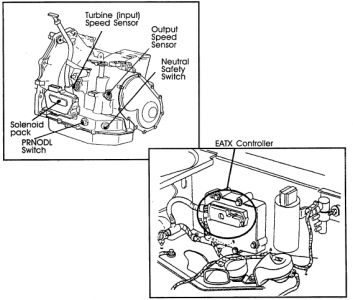
Code 15
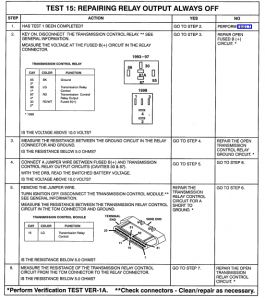
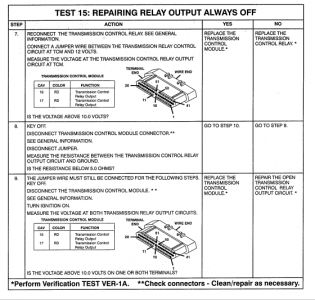
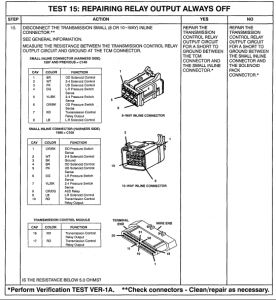
THEORY OF OPERATION:
The transmission control relay is used to supply power to the solenoid pack when the transmission is in normal operating mode. When the relay is off, no power is supplied to the solenoid pack and the transmission is in "limp-in" mode. The relay output is fed back to the TCM through pins 16 and 17.
After a controller reset (ignition key turned to the "run" position or after cranking engine), the controller energizes the relay. Prior to this, the TCM verifies that the contacts are open by checking for no voltage at the switched battery terminals. After the relay is energized, the TCM monitors the terminals to verify that the voltage is greater than 3 volts.
This code is set when less than 3 volts are present at the Transmission Control Relay output terminals. This is measured at the Transmission Control Module (TCM) when the TCM has energized the relay.
LIMP-IN:
YES
WHEN MONITORED/SET CONDITIONS:
Ignition key is turned from "off" position to "run" position and/or ignition key is turned from "crank" position to "run" position. The following conditions must be met for a successful OBDII trip:
The engine must run for more than two minutes
The turbine speed must run for more than two minutes
If the transmission is below normal operating temperature, all forward gears must be applied for 3.5 seconds each and the transmission must be in either "park" or "neutral" for 3.5 seconds
If the transmission is hot, all forward gears must be applied for 1.5 seconds each and the transmission must be in either "park" or "neutral" for 1.5 seconds
No MIL lamp trouble codes have occurred or recurred
TRANSMISSION EFFECTS:
On 93-95 MY vehicles, relay outputs only checked for 1 second after start up. Consequently, if relay output is lost after that period, the transmission will go into limp-in mode with no DTC's. Beginning with 1996 MY vehicles, relay output is always sensed, therefore anytime the switched battery drops below 3 volts, the transmission goes into limp-in mode and sets the code.
All MY's and calibrations - Relay open limp-in mode.
POSSIBLE CAUSES:
Relay failure (intermittent relay function caused by oxidized or contaminated relay contacts)
Short to ground or open circuit in the transmission control relay circuit(s)
TCM connector problem
Defective TCM
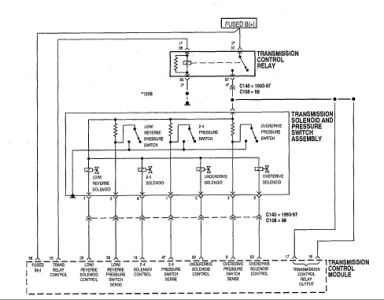
Code 22

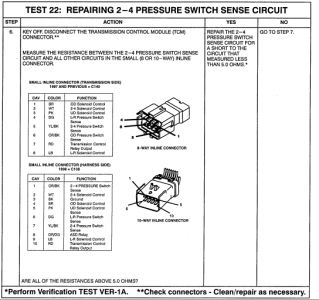
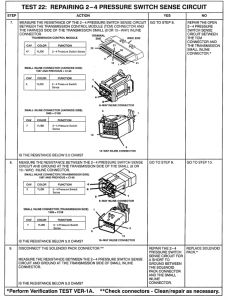
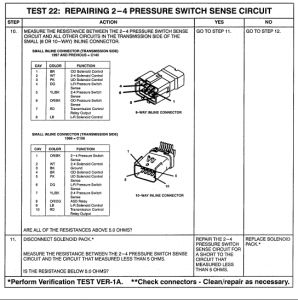
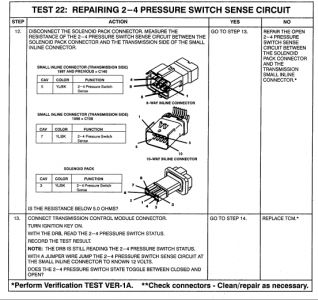
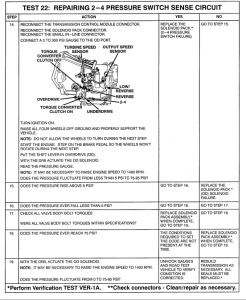
THEORY OF OPERATION:
The transmission system uses three pressure switches to monitor the fluid pressure in the L-R, 2-4, and OD elements. The pressure switches are continuously monitored for the correct states in each gear as shown below:
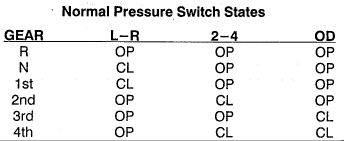
This code is set if the 2-4 pressure switch is open or closed at the wrong time in a given gear (see chart above)
LIMP-IN:
YES
WHEN MONITORED/SET CONDITIONS:
Whenever the engine is running.
TRANSMISSION EFFECTS:
93-95 model year + 96 model year V-1 calibration - relay open in limp-in mode
96 model year V-2 calibration (default desensitization) and later
If the 2/4 pressure switch is identified as closed in Park or Neutral, the code will immediately be set and normal operation will be allowed for that given key start. If the problem is identified for three successive key starts, the transmission will go into relay open limp-in mode
If the 2-4 pressure switch is identified as being closed, in 1st or 3rd gear, and was not identified as being closed in P or N. then 2nd gear, or 4th gear, will be substituted for 1st or 3rd gear depending on throttle angle and vehicle speed. A short period of time after gear substitution, the transmission will return to normal operating mode. If the transmission is shifted back into 1st or 3rd gear through normal operation, and the 2-4 pressure switch remains closed, 2nd or 4th gear will be substituted briefly, and then resume normal operation. If four gear substitutions occur in a given key start, the transmission will go into limp-in mode by opening the relay contacts
If the 2-4 pressure switch is open (indicating no 2-4 clutch pressure) in 2nd or 4th gear, the TCM sets code 22 and continues with normal operation. The transmission will only go into relay open limp-in mode if a code 28 is also present. If no 2-4 clutch pressure is present a speed ratio code 52 or 54 will be set and cause the limp-in condition
POSSIBLE CAUSES:
If code 35 is present, ignore code 22 and perform code 35 diagnostic procedures
2-4 pressure switch sense circuit open or shorted to ground between TCM and solenoid pack
2-4 pressure switch sense circuit shorted to battery
Solenoid pack defective
Transmission overheated - Excessive regulator valve leakage in valve body causing high line pressure which results in 2-4 solenoid blow-off into 1st or 3rd gear. This may require a new valve body if it happens only when hot
Loose valve body bolts
Plugged filter - internal transmission or torque converter failure
Inline connector problem
Defective TCM
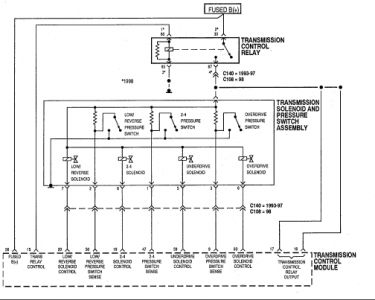
Code 23

THEORY OF OPERATION:
The Transmission system uses three pressure switches to monitor the fluid pressure in the L-R, 2-4, and OD elements. The pressure switches are continuously monitored for the correct states in each gear as shown below.
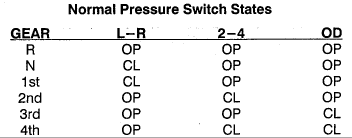
This code is set if the 2-4 and OD pressure switches are either open or closed at the wrong time in a given gear. This indicates that both the 2-4 and OD pressure switches indicated the wrong state at the time the fault was set.
LIMP-IN:
YES (93-95 MY)
NO (96 AND LATER MY)
WHEN MONITORED/SET CONDITIONS:
Whenever the engine is running.
TRANSMISSION EFFECTS:
93-95 model year + 96 model year V-1 calibration - relay open limp-in mode
96 model year V-2 calibration (default desensitization) and later - Code eliminated, codes 21 and 22 will be set
POSSIBLE CAUSES:
If code 35 is present, ignore code 23 and perform code 35 diagnostic procedure
If code 35 is not set, follow diagnostic procedures for codes 21 and 22
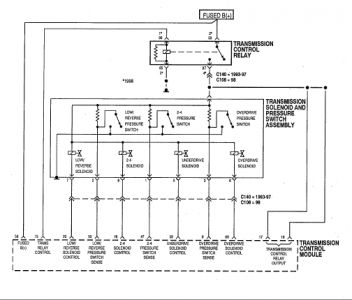
Test 35
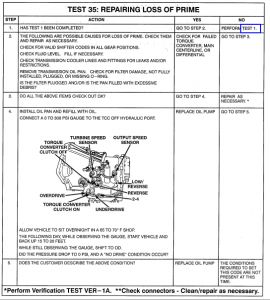
THEORY OF OPERATION:
The loss of prime test is used to prevent transmission defaults which can be caused by lack of pump prime.
If the transmission begins to slip in any forward gear, and the pressure switch or switches that should be closed for a given gear are open, a loss of prime test begins. All available elements (in 1st gear L-R, 2-4 and OD, in 2nd, 3rd, and 4th gear 2-4 and OD) are turned on by the Transmission Control Module (TCM) to see if pump prime exists. The code is set if none of the pressure switches respond. The TCM will continue to run the loss of prime test until pump pressure returns.
LIMP-IN:
NO
WHEN MONITORED/SET CONDITIONS:
If the transmission is slipping in any forward gear and the pressure switches are not indicating pressure, a loss of prime test is run.
TRANSMISSION EFFECTS:
All model year and calibrations. Vehicle will not move or transmission slips. Normal operation will continue if pump prime returns.
POSSIBLE CAUSES:
Low transmission fluid level
PRNDL indicates a valid OD code in the hydraulic reverse position
Transmission fluid filter clogged or damaged
Transmission fluid filter improperly installed (bolts loose or O-ring missing)
Oil pump - if a customer has a problem when the transmission is cold whereby he shifts to reverse, gets reverse, and then shifts to OD and does not get OD (gets a neutral condition), and then can not get reverse or OD for between 3-20 seconds, replace the oil pump. High side clearance in the oil pump will set a code 35. The pump will prime upon start- up, but as the torque converter purges air (drain down) the air will leak across the inner rotor into the pump suction port and cause a loss of prime right after the shift into OD. After 3-20 seconds, pump prime will return and normal operation will continue. The pump should be replaced only after all other possible causes above have been checked and verified
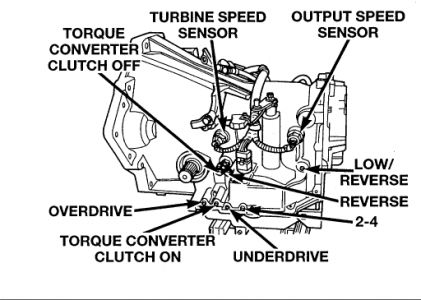
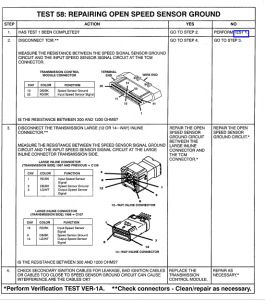
THEORY OF OPERATION:
The transmission system uses two speed sensors, one to measure input RPM and one to measure output RPM. These inputs are essential for proper transmission operation. Therefore, the integrity of this data is verified through the following checks:
When in gear, if the gear/speed ratio does not compare to a known gear ratio, the corresponding in-gear trouble code is set ( codes 50 through 54).
An excessive change in input or output speeds indicating signal intermittence will result in codes 56 and/or 57 being set.
After a TCM reset in neutral, observing erratic output and input speeds indicating sensor signals indicates a loss of the common speed sensors ground. This sets a code 58.
LIMP-IN:
YES
WHEN MONITORED/SET CONDITIONS:
The transmission gear/speed ratio is monitored continuously while the transmission is in gear. This code is set if the gear/speed ratio is not correct for a period of time. A hard code sets within 3 seconds, an intermittent code sets within 15 seconds.
Code 58 sets after a TCM reset in neutral and Nt/No equals a ratio of input to output of 2.50
TRANSMISSION EFFECTS:
93-95 MY + 96 MY V-1 calibration - At speeds below 45 MPH, the transmission goes into relay open limp-in mode. At speeds above 45 MPH, EMCC is aborted and the current gear is maintained until vehicle drops below 45 MPH, at which time the transmission goes into relay open limp-in mode.
96 MY V-2 calibration (default desensitization) and later - The transmission will not go into relay open limp-in mode until three gear/speed ratio error events occur in a given key start. This allows for intermittent problems to correct themselves without opening the relay. However, if a gear/speed ratio error develops, a code is always set, but if the the condition corrects itself the transmission will continue without requiring the ignition key to be cycled on and off. Many different events could occur given the range of failures possible for codes 50 through 58. The following are a few examples:
Codes 51, 52, 53, 54, 56, and 57 (at speeds above 45 MPH) - If one of these codes is set above 45 mph, converter clutch operation is aborted and current gear is maintained. If the vehicle is still travailing over 45 mph and the gear ratio becomes valid, normal operation will resume. If the gear ratio becomes invalid three times in a given key start, converter clutch operation is aborted and current gear is maintained until the vehicle speed drops below 45 mph. Below 45 mph, current gear will be maintained until vehicle speed drops to 22 mph or until throttle is applied, at which time the transmission system will go into limp-in mode.
Codes 51, 52, 53, 53, 54, 56, and 57 (at speeds between 22 and 45 MPH) - If one of these codes is set between 22 and 45 MPH, current gear will be maintained unless throttle is applied, at which time the transmission will shift to second gear. If the gear ratio becomes valid, normal operation will resume. If the gear ratio becomes invalid three times in a given key start, the current gear will be frozen until vehicle speed drops to 22 mph or until throttle is applied, at which time the transmission system will go into limp-in mode.
Codes 51, 52, 53, 54, 56, and 57 (at speeds below 22 MPH) -If one of these codes is set below 22 mph, the transmission will shift to second gear. If the gear ratio becomes valid, normal operation will resume. If the gear ratio becomes invalid three times in a given key start, the transmission system will go into limp-in mode.
POSSIBLE CAUSES:
Open or shorted speed sensor ground (speed ground is different from chassis ground)
Open or shorted thermistor wiring to TRS
Defective TRS - will also set code 74
Defective TCM
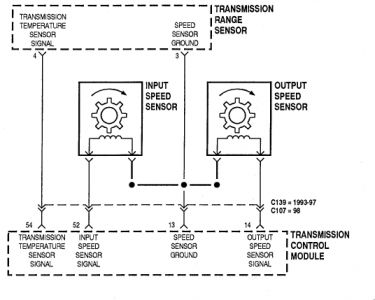
Additional Pics
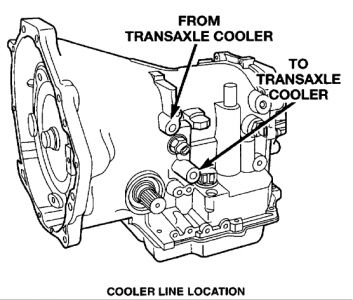
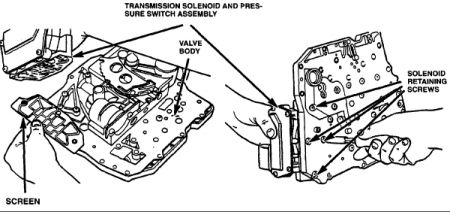
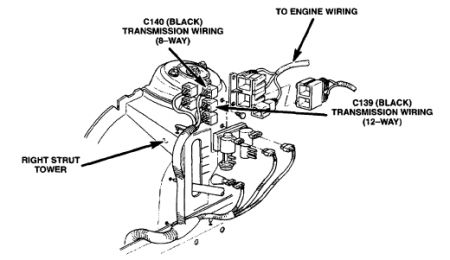
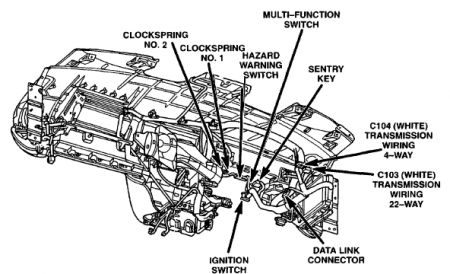
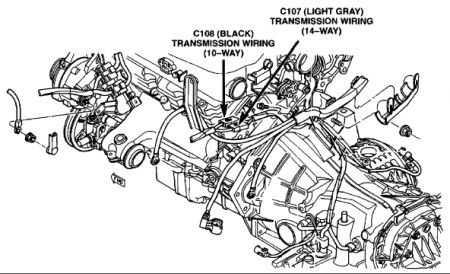
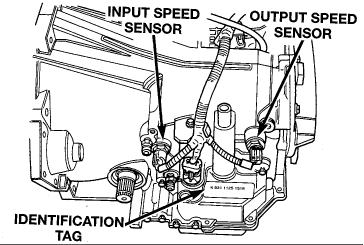
Thursday, October 30th, 2008 AT 1:06 AM










































